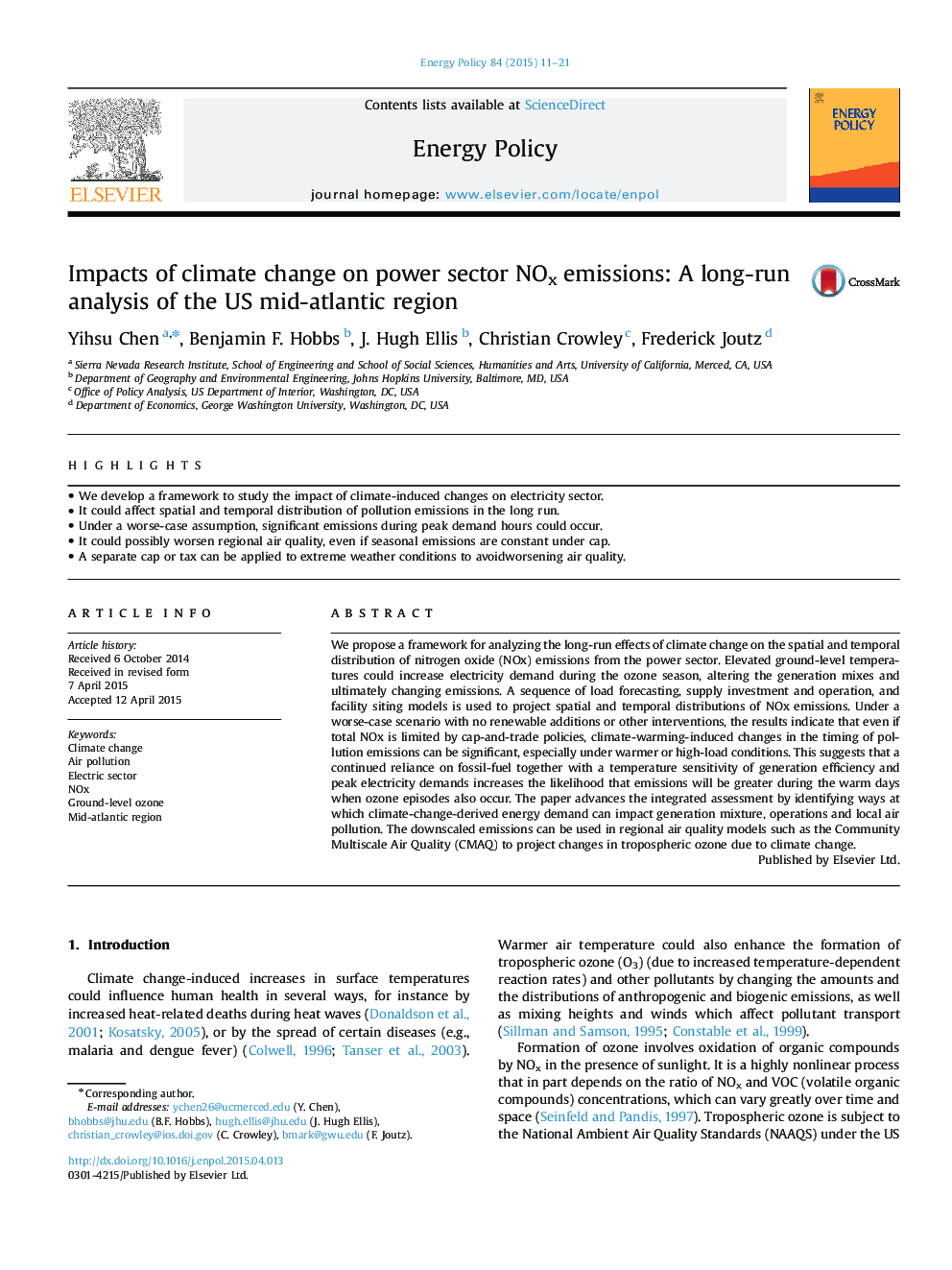| Article ID | Journal | Published Year | Pages | File Type |
|---|---|---|---|---|
| 7400845 | Energy Policy | 2015 | 11 Pages |
Abstract
We propose a framework for analyzing the long-run effects of climate change on the spatial and temporal distribution of nitrogen oxide (NOx) emissions from the power sector. Elevated ground-level temperatures could increase electricity demand during the ozone season, altering the generation mixes and ultimately changing emissions. A sequence of load forecasting, supply investment and operation, and facility siting models is used to project spatial and temporal distributions of NOx emissions. Under a worse-case scenario with no renewable additions or other interventions, the results indicate that even if total NOx is limited by cap-and-trade policies, climate-warming-induced changes in the timing of pollution emissions can be significant, especially under warmer or high-load conditions. This suggests that a continued reliance on fossil-fuel together with a temperature sensitivity of generation efficiency and peak electricity demands increases the likelihood that emissions will be greater during the warm days when ozone episodes also occur. The paper advances the integrated assessment by identifying ways at which climate-change-derived energy demand can impact generation mixture, operations and local air pollution. The downscaled emissions can be used in regional air quality models such as the Community Multiscale Air Quality (CMAQ) to project changes in tropospheric ozone due to climate change.
Related Topics
Physical Sciences and Engineering
Energy
Energy Engineering and Power Technology
Authors
Yihsu Chen, Benjamin F. Hobbs, J. Hugh Ellis, Christian Crowley, Frederick Joutz,
